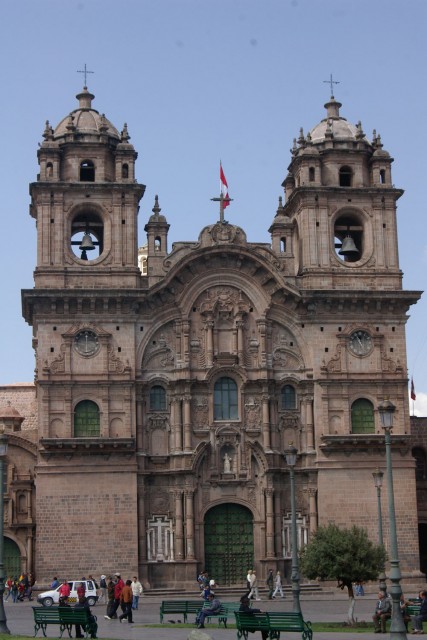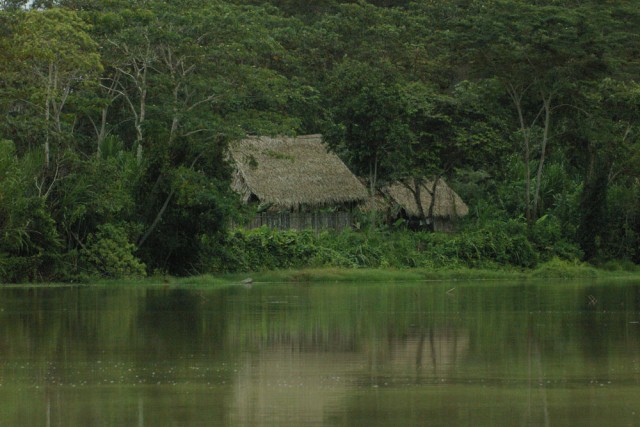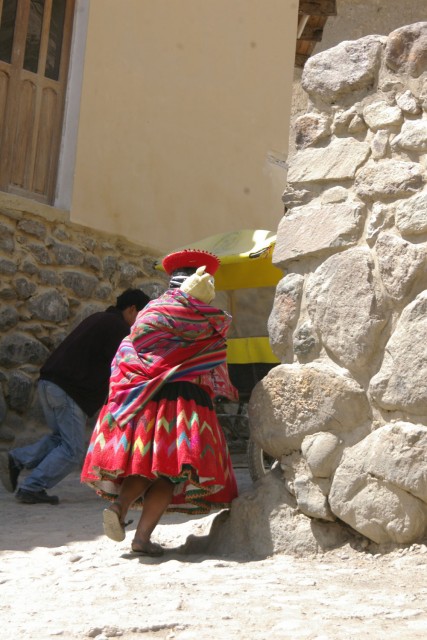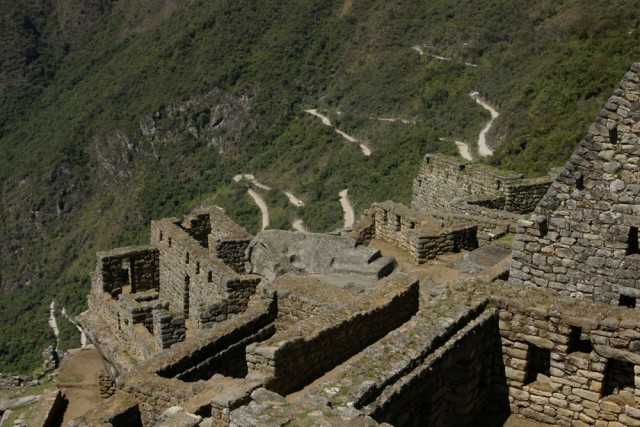Story by Jack Stuhler with an introduction by Paul May,
Jack Stuhler, the founder of Eezi-Awn, is an adventurous man and has spent his entire life exploring the African Continent. After driving from Johannesburg to the UK through the middle east in the early 1999, Jack set his sights on the Americas. He prepared a Toyota Land Cruiser 70 Series Troopy by the name of Tubby for his journey and shipped it to South America. With his significant other, Margaret, their epic journey from Ushuaia to Dead Horse Alaska took over 18 months to complete in 2004/2005. They later returned south to Houston, and shipped Tubby home. Quite impressive for a couple in their 60s. Their adventures are an inspiration for us all.
THE AMERICAS WITH TUBBY XPLORER SOUTH AMERICAN ADVENTURE PART NINE
First light before sparrows we lugged our kit downtown to the offices of the Travel Agent arranging our Expedition into the jungle Reserve of Manu. Setting off by road at 6 am – a small group, only six of us – marvellous!! A young American couple from Idaho, the guide & cook for the next few days, our transport loaded with camping gear, food and water to sustain us for the next week. The rest of the crew would join us later. After a short stop for breakfast we hit the road and drove south-east leaving tarmac and onto a winding dirt road rising high up into the Andes. I must be the worst backseat driver (passenger) in the world. It is not easy to relax especially when you are sitting in the back of a caboose of a typical Overlander vehicle and not in control navigating hair- raising terrain.
On this day our turn on this narrow one-way track towards our first stop 260 kms away. The road and single track is so narrow that on certain days traffic goes down and alternate days up. In spite of the narrowness of the road faster vehicles passed us en route. Despite this ruling it did not stop a number of vehicles coming from the opposite direction!! Passing through tiny Andean villages we ascended above 4,200m stopping at a Colla Funery (burial site). These towers were called Chulpas. Little is known about these people except that they were a warlike tribe that spoke Aymara. The remains of the nobility were buried in family groups complete with food and belongings for the journey to the after world. The only opening in the tower faces east and big enough for a person to crawl through after the burial and the entrance was then sealed.
Leaving glorious sunshine behind the descent took us down towards the jungle. At first passing through a cloud and rain forest, stopping to observe a most vividly coloured red and blue bird called Cock of the Rock. Luck was on our side and we got to see a number of these and able to bring home the evidence – a good photo. At dusk the truck wheeled into a small village, Pilcopata, deep in the jungle. Humid and hot – dinner time, a tropical storm set in and it pelted with rain the resonance of the falling raindrops on a palm-frond roof soon lulled us to sleep in our comfortable little shack at an altitude of only 500m.

Up early, weather misty, and off again. The soaking rain had eroded the road making it even narrower – crikey how tight can it get but the driver held his cool. By now I had got used to his driving and for the next hour he negotiated the three tonner cautiously along further into the jungle until we reached the end of the road, a clearing and a tiny village called Atalaya at the edge of an enormous expanse of water, actually part of the headwaters of the Amazon River. Leaving the overlander we stepped down onto a huge covered timber deck overlooking this vast river on which a table was set for our early morning meal. Anchored below various handcrafted timber longboats – in length 18m width 2.4m with a roof stretching from the back three quarters to the front – a 55 hp Mariner outboard motor driving and a spare one nestled in the front – just in case. One of these craft was to be our mode of transport for the next five days. The final addition to our crew – the helmsman and the boatman. So in all we were eight travelling to a campsite somewhere in the jungle. Four tourists and the same number to look after us – not a bad ratio – damn near perfect. They spoilt the life out of us – marvellous!!!!
All equipment, tents, food, water, gear, cooking utensils etc were transferred from the Overlander and after breakfast we set off. By now the fog had lifted and the roof overhead was most welcome as were the very comfortable seats. The motor revved and we left the village behind in our wake down the muddy river. Toodalling along jungle both sides of the waterway, there were many birds either perched on trees at river’s edge, on sandy banks or flying overhead such as herons, storks, black skimmers, geese, duck and many tiny little dickies. Got lucky and saw a black and white toucan flitting through the high canopy lining the river, red and blue macaws flying high up and even sighted two otters scurrying to the river’s edge.

Lunch was served on board whilst cruising along. Eventually at last light the eight of us reached our destination. Butts square by now, after so many hours on the river. The helmsman edged the long boat to the side of the muddy bank, the boatman jumped out grabbed the rope and anchored it to a log and the group made its way up the slippery bank towards a lodge, our campsite for the night. Tents were pitched on a wooden deck, the roof covered with palm fronds – quaint and comfortable. The crew lugged all the gear from the boat and whilst the cook got going with the evening meal and the sun almost set, the guide took us for an hour’s walk on a narrow damp pathway into the jungle – moquitoes and insects aplenty. In spite of covering ourselves with repellent, Margaret and I arrived back in camp covered in insect bites.
Our routine for the next five days was early to bed and early to rise. So it was, we set off shortly after sunrise down the river – a ten minute ride, twenty minute walk to a hide overlooking a macaw and parrot clay lick. Apparently the birds feed on the clay to take in minerals they do not get from their natural habitat during the months of late July to end of September when the rainy season sets in and new edible food is available.
Sitting in the hide for almost five hours parrots and scarlet macaws approached and perched high up in the tall trees growing on the banks on the opposite side of the river but none ventured down to the lick – too much wind and foul weather. What rotten luck, not even a picture. Left the hide and back on the river. A really miserable cold and drizzly day. A six hour ride – this time over-nighting in a very cosy lodge – same routine for our crew lugging everything ashore.
Our cook was marvellous and it was amazing the meals she rustled up for us – absolutely tasty and delicious. Yngrid, the guide, a walking encyclopedia of knowledge. She had a wonderful broad spectrum of all around, the trees, the birdlife and mammals en route. Very few questions remained unanswered. A pleasure and a privilege to have such a knowledgeable person to show us the way – our crew super guys carried our heavy gear. At times we felt like Livingstone accompanied by his askaris in Africa carrying all the katundu, walking in a line behind him.


Day 4 – a jackpot day. Fine weather cruising upstream, veering north on the Manu River before entering the actual Reservation of Manu. A quick check in at the Park HQ and then a full day’s sailing upriver. Many species of colourful birds; a capybara the biggest rodent in the world – looks like a giant guinea pig on steroids; the smaller white cayman (crocodile) and the much larger black variety growing up to 6m in length, numerous large turtles all congregating at various points along the rivers edge either on wide beaches or lying on logs. Then to crown the day a cherry on the top – squirrel monkeys, tan brown in colour with cute little white faces jumping around in the vegetation close to rivers edge. The day flew by and at sunset, we pulled up to the shoreline, clambered up the bank to our next site and erected tents on individual decks set amongst huge palms and trees, our abode for the next two nights. A good meal then off to bed, an exhausting but exhilarating day.
Day 5. Another eventful one – a long walk down a jungle path, woolly monkeys moving around in the enormous tree canopy high above as we ambled to a tall platform overlooking an oxbow lake. Not much activity – saw Hoatzin, a scraggly, peculiar large bird apparently not sought after by the Indians who still inhabit this part of the world for food. The meat has an awful taste and stinks like hell – what a blessing for the bird. Back to camp, an early lunch and another short stint up the river, then hiked through the jungle to another lake and a platform catamaran. Slowly paddling along our guide caught sight of a family of Giant Otters playing and feeding at lake’s edge. Our boatmen manoeuvred the platform closer to the cavorting animals that grow up to 1.6m. What a find. Spent a long time sitting in silence observing these magnificent creatures in their natural element in the lake. Spider monkeys were swinging in the trees above. Wanted to linger longer but had to leave the sun was setting fast – not clever to wander in the jungle at night without a light nor cruise the river in the dark. Arriving at our campsite at last light the narrow footpath to our platform was hardly visible amongst the huge trees and thick vegetation all around.
The last day. A very early rising – heavy mist as we set off down the river the visibility virtually nil , our boatman guiding the way ahead for the helmsman by sitting up front. Slowly, slowly we edged along and at last the rising sun, a ball of fire appearing over the jungle, broke through the mist and the going was easier. With the warm rays bearing down on the river lots and lots of birds perched in the trees and cayman, turtles and a family of four capybara lying on a beach were sunning themselves.
Shortly after 9.30 am we reached Boca Manu a village mostly constructed of timber and palm fronds – humid and hot. Farewell to the river, our crew and co-travellers are returning upstream and by bus back to Cusco. Midday we boarded the aircraft, a 12 seater Caravan taking off from a grassy runway hacked out of the jungle. Before long the aircraft flew high over the Andes and landed back in Cusco. A one night lay over, and this time off to Machu Picchu and the Sacred Valley of the Incas.

Sacred Valley of the Incas
Heading up out of Cusco in the Land Cruiser, our first stop Sacsayhuaman the most impressive huge Inca ruin in the immediate vicinity of the city. The name translated means “Satisfied Falcon.” Although the site seems big only 20% of the original ruins remain – the Spaniards destroyed most of the fort and utilized the stone for their own houses and buildings in Cusco leaving behind the largest and most impressive original boulders, one of which weighs over 300 tons. These form the main battlements. I toured here way back in 1976 and even today it is awesome to see and marvel at these huge hand chiseled interlocking rocks welded into a phenomenal gigantic structure. One has to see it to believe it.
Leaving Sacsayhuaman we passed other Inca sites – Puca Pucara perched high on a knoll at the edge of the road, Tambo Machay and Quenko – eventually dropping down into the Urubamba Valley also known as “El Valle Sacrado” or “The Sacred Valley”. Driving via Pisac, Calca, Yucay, Urubamba (which is known for its fine pottery), paralleling the Urubamba River we entered the last village at the end of the road, Ollantaytambo, above which is a major Inca Site and ruins of the same name. Ollantaytambo was the fortress to which Manco Inca retreated after his defeat at Sacsayhuaman by the Spaniards. Eventually he was chased out of there and fled to his last stronghold Vilcabamba further into the jungle where he was tracked down and murdered by the Conquistadors in 1544.


Our hostel door led onto the train platform (closer you could not get) – the Cruiser parked across the road in a farmyard. The next morning at first light we boarded the train, the only public transport, venturing north to the ruins of Machu Picchu. An hour later we got off at Aguas Calientes also known as the Village of Machupicchu. From there we were taken by mini bus on a half hour hair-raising drive up a zigzagging track to the top of huge monoliths and the Inca Ruins of Machu Picchu with its commanding views overlooking the Urubamba River and valley.

It is an amazing sight the setting of this the most famous of all the Incan ruins and still today the archaeologists speculate as to the function of this incredible city which was re-discovered in 1911 by the American Historian Hiram Bingham. He stumbled upon it almost by accident in his search for the lost city of Vilcabamba. At the time it was totally overgrown by the jungle but today it has been cleared and the renovations since last I visited in 1976 most visible. We spent the day exploring these majestic ruins. There is just so much to see, photograph, video and take in. At times relaxing not only to catch a breath but to just marvel at all around and stare into the abyss below, the train and river ‘Liliputian’ in the valley.
Mini-bussed back down the valley to overnight in quaint Hotel President next to the railway station in Aguas Calientes. The following day we waited until late afternoon for our train connection back to Ollantaytambo boarding the Backpackers, the slow train back to Cusco, we arrived back at dusk rang the bell at the door on the platform and welcomed home from home. Spent two more nights in this cute little Hostal and then took off backtracking up the valley the only way out via Pisac continuing the road paralleling the Urubamba River until reaching the main road from Cusco to Juliaca.

Driving along the Altiplano – lots of Andean adobe villages – late Saturday afternoon we arrived in Juliaca amidst its bustling traffic– mini buses and three-wheeler taxi cycles everywhere. This reminded me very much of the chaos in Dar es Salaam in Tanzania. With the intimidating size of the Landcruiser, we edged our way through and wound up over-nighting at comfortable lodgings with the inevitable secure parking (cochera). Cold up here close to Lake Titicaca at an altitude of 3322m above sea level.
Weeks have gone by and it was time to return to Arequipa and Toyota to fit the new prop shaft oil seal as previously arranged. Don’t want to take chances, rather careful than sorry. We still have a long way and many months to go in our Odyssey of South America.
When in Rome do as the Romans do!! So whilst waiting for the Land Cruiser to be repaired Margaret and I took a lollipop taxi into town to a restaurant situated on a balcony overlooking the Plaza de Armas, a picturesque historical square. I decided to indulge in local Peruvian fare – cuys (guinea pig). The whole animal from head to tail was served, barring the intestines. The skin was crispy, the meat tender and very tasty. I must tell you though that I wouldn’t go home and contemplate knocking off one of my grandchildren’s pets to eat – can you imagine!!!!

As a matter of interest cruising along the Panamericana and all the other routes traversed we noticed that either at the entrance or exit of villages, towns or tollgates a highway patrol vehicle was parked ready for action. These were predominantly black Toyota 4500 Turbo Series 80 Land Cruiser with official emblems. In Cusco itself the Policia de Turistica were issued the newer 100 V8 Series Land Cruiser. I assume these high powered 4×4’s were used to negotiate the extreme altitudes in which they were employed. The only diesel driven Toyotas seen were 3 litre Turbo double-cab Raiders.


We have been in Peru for a little over a month and it has been exciting and extremely grandiose not only in scenery also culture and history. Wish that we could linger longer but it is time to move on via Lake Titicaca to Bolivia.


